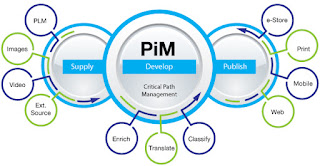In What Ways Open-Source PIM Solutions is Building a Better Future for Small and Medium-Sized Businesses
Since all the new-age small and
medium-sized businesses begin to fight with big tech companies on product data
management side, they often find themselves at a disadvantage since big tech
companies install costly proprietary pim
solutions to meet their customer experience objectives. Open-source pim systems
can totally transform the situation for new-age small and medium-sized
businesses, assisting them offer rich and omni-channel experiences.
This post explains the key
approaches how open source product
information management software can assist new-age small and
medium-sized businesses boost their CX, develop a foundation for omni-channel
and effectively compete in the global markets.
Know How Open-Source
PIM Solutions is Building a Better Future for Small and Medium-Sized
Businesses:
- Customizability: Presently, many businesses have a twisted maze of processes and technologies, few of them are incorporated across the business enterprise while others stay siloed. The massive configurability of open-source pim solutions means that business enterprises can personalize the software to meet their current and future requirements, rather than realigning their operations around the product information management software. Moreover, a lot of open-source pim solutions encompass single-source-of-truth data functions that allow them to import the data from several applications and data feeds. This functionality enables small and medium-sized businesses to support a lot of complex processes engrossed in omni-channel with correct data and democratizes the data access across the company.
- Interoperability: The API-oriented integration approach of open source product information management software is a benefit for small and medium-sized businesses given that they allow a huge amount of liberty in the way you connect your current systems together. Particularly, open-source APIs assist you personalize the data connectors amid front-end systems, PoS systems, product databases, content management platforms, ERPs, customer data storage catalog developing software and many other internal and third-party applications. Additionally, you can put in any amount of APIs to a virtually infinite number of systems only if you have the bandwidth to support them. Not all business pim software, if any, provides you the similar level of interoperability which an open-source pim solution offers.
- Flexibility: One of the key benefits of making use of open source pim software is the access to the fundamental code. This access that pim solutions offer enables new-age small and medium-sized businesses to customize the pim system to their specific business requirements. It also provides an opportunity to make custom data flows and data capture points that are important while working with different online and offline channels, surfacing latest technologies and IoT hardware. While commercial pim solutions might come with several mature features, they hardly ever provide much in terms of flexibility when it is about configuration.
- Automated Work: Moreover assisting you build better-off customer experiences and handling the data, effective product information management software can assist you automate several boring tasks, freeing up your team’s precious time to concentrate on developing new customer experiences. From merchandising and creating catalog to data structuring and work validation, your pim solutions can be configured to handle it all. But automation must be done in phases and through making use of an open-source pim solution, you can add automation by degrees and as per your own terms, establishing approval-based workflows and notifications about each process, rather than depending on pre-configured protocols.
For new-age small and
medium-sized businesses having comparatively limited budgets, the full cost of
ownership is an important factor in any IT execution and open source pim solutions assist you attain
exactly that.





Comments
Post a Comment